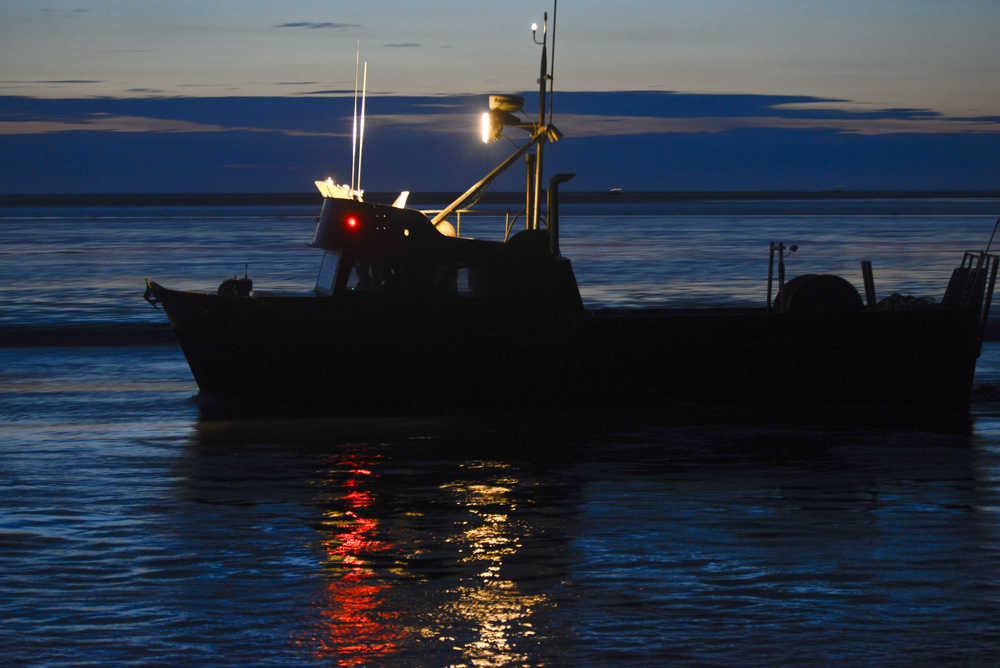If everything goes as forecast, Upper Cook Inlet fishermen should see a total run of 5.8 million sockeye during the 2015 fishing season.
Of those, the Alaska Department of Fish and Game estimates that about 2.1 million will make it past boats, beach nets, dipnets and individual lines in the water to their natal streams — leaving a harvest of about 3.7 million fish.
The 2015 Upper Cook Inlet Sockeye Salmon Forecast outlines harvest predictions in several major systems in the Cook Inlet including the Kenai and Kasilof rivers, the Susitna River, the Crescent River and Fish Creek.
On the Kenai River, biologists are calling for a total run of about 3.6 million fish, which is about 200,000 fewer than the 20-year average, according to the forecast. The run should be primarily composed of four- and five-year-old sockeye, according to the report.
On the Kasilof River, nearly 1.1 million sockeye are forecasted to return, which is about a 12 percent increase from the 20-year average. Biologists estimate that the run should be primarily three- and four-year-old fish.
In the northern part of the inlet, Susitna River and Fish Creek sockeye salmon runs are each expected see far fewer fish than 20-year averages for the two systems with 276,000 predicted to return to the Susitna and 61,000 to Fish Creek.
Biologists also estimated commercial harvests of the other four species of salmon returning to the Cook Inlet. Chum salmon at 176,000 and coho salmon at 161,000 are predicted to be caught in the largest volume while 98,000 pink salmon are predicted to be caught. The fleet is expected to catch about 6,700 king salmon in 2015, according to the report.
Despite the banner forecast, it’s unclear how Cook Inlet commercial fishermen will fare in the coming season.
In 2014, setnetters in the Upper Cook Inlet were restricted in the name of conserving weak chinook salmon runs; a 4.9 million commercial sockeye harvest was predicted, but the fleet caught 2.6 million.
If measured in sheer volume of fish, the Upper Cook Inlet commercial harvest of salmon was low: preliminary Fish and Game estimates showed it to be about 20 percent less than the 10-year average harvest.
Despite the lower harvest, higher prices may have deflected some of the blow to area commercial fishermen. It was the second year that commercial harvesters in Cook Inlet saw lower-than-average harvests with higher-than average values. When the $2.25 price per pound for sockeye is factored in, the ex-vessel value of the 2014 harvest was high, at $35 million.
But, the value of the sockeye harvest wasn’t spread equally among fishermen — a trend in recent years as Upper Cook Inlet setnetters find themselves on an increasingly restrictive fishing schedule due to low numbers of king salmon returning to area streams.
Between the two types of commercial fishing in Upper Cook Inlet, drift gillnetting boats caught approximately 1.47 million sockeye salmon, or about 64 percent of the total salmon harvest in Upper Cook Inlet. In 2013, drift fishermen caught about 1.65 million sockeye salmon, compared to the setnet harvest of 992,000 fish. In 2012, when setnet fishermen were shut down for the bulk of the season, drift fishermen took nearly 93 percent of the total salmon harvest.
Typically, harvest is more evenly split between drift and set gillnet fishermen, said Commercial Area Management Biologist Pat Shields in a previous Clarion interview.
However, as sockeye salmon continue to return to the inlet in large numbers and king salmon numbers continue to drop, disparities in harvest between the two gear types have become more pronounced.
“Typically it’s not quite a 50-50 split between drifters and setnetters,” said Assistant Area Management Biologist Aaron Dupuis. “Usually the drifters get a bit more, but the difference increased quite a bit since we’ve had a low abundance of kings.”
The conversation around saving chinook salmon has not subsided and sportfishing managers promised similar restrictions to inlet’s king salmon fisheries in a spate of emergency orders released in February. The restrictions will undoubtedly affect the commercial fisheries, though it is unclear how far-reaching those effects will be on Cook Inlet commercial fishermen.
Reach Rashah McChesney at rashah.mcchesney@peninsulaclarion.com.
